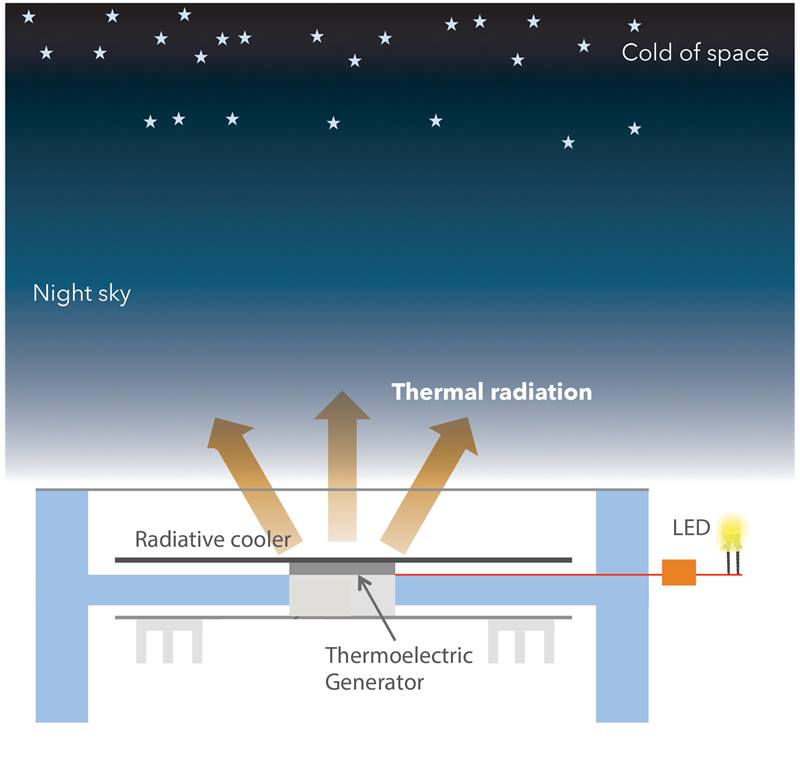All objects emit heat in the form of infrared light. This effect is strongest in dry, clear air, especially on cloudless nights. As a result, objects can become colder than the surrounding air. For example, car windshields can form frost even in above-freezing temperatures. Radiative sky cooling employs this effect as a passive cooling mechanism. Ancient Persians used radiative sky cooling to make ice on the surface of water pools and stored the ice in buildings called yakhchāls. Now, scientists have demonstrated that radiative sky cooling can be coupled with thermoelectric materials to generate enough electricity to power a small light emitting diode (LED).
The Impact
Solar photovoltaic cells are an important source of electric power. However, solar power requires costly batteries to store energy for use at night or on cloudy days. For applications like lighting and sensors, thermoelectric generators based on radiative sky cooling may be a solution, generating power throughout the night. While these new devices would produce less power than a comparably sized solar cell, they would work in total darkness. The scientists built a device that makes only enough power for an LED. However, they calculate that much higher power output is possible with higher-quality components.
Summary
Light at mid-infrared wavelengths can pass through the atmosphere with relatively little loss, especially in dark, cloudless, and dry conditions. As a result, much of the infrared thermal radiation emitted by an object can pass through the atmosphere into space, passively cooling the object to well below ambient temperatures. Scientists built a device that takes advantage of this passive radiative sky cooling using a thermoelectric generator, a type of generator that makes electricity in response to differences in temperature. The top of the device was painted black and pointed toward the night sky, while the bottom was supported above the ground to allow it to be heated by the surrounding air currents. The middle of the device contained a commercially available thermoelectric generator. When tested on a rooftop in Stanford, California on a clear night, the temperature difference between the top and bottom of the device generated 0.025 watts of power per square meter. Although this power output was small, it was enough to power a small LED and demonstrated the device’s potential usefulness. The scientists believe that these devices could produce as much as 0.5 watts per square meter using high-quality commercially available components—about 20 times as much power as the experimental device and enough power for lights or sensors.
Funding
Department of Energy, Office of Science, Basic Energy Sciences as part of the ‘‘Photonics at Thermodynamic Limits’’ Energy Frontier Research Center, and the Mellon Family Foundation.
Original post https://alertarticles.info


